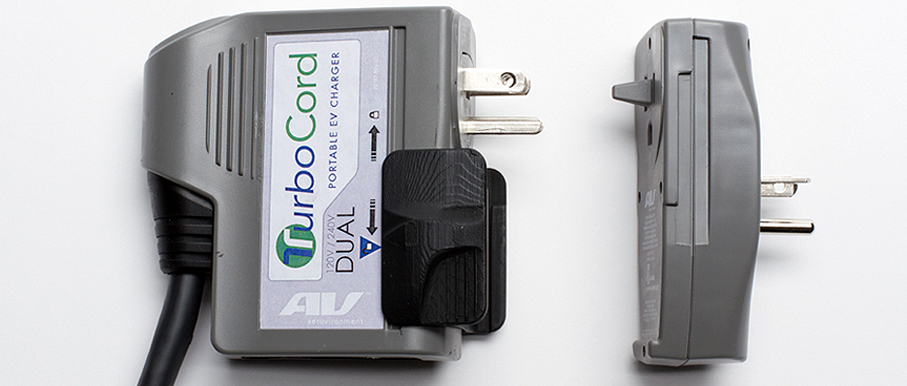With the increasing popularity of electric and hybrid electric vehicles, some employers have come to the party and installed charging stations for their employees. Now AeroVironment has released its TurboCord, which allows businesses to provide faster EV charging by simply installing NEMA 6-20R 240-volt outlets, rather than going to the expense of providing dedicated charging units.
Although better known to Gizmag readers for its Global Observer and other small UAVs, Aerovironment supplies home chargers for a number of global automakers including Fiat, Ford, Mitsubishi and Nissan. Although the TurboCord won't juice up a vehicle as fast as a dedicated charging point, AeroVironment says that using a 240-volt outlet, the TurboCord will charge a vehicle three times faster than standard cordsets.
The UL (Underwriters Laboratory) listed TurboCord is available in two versions: a 240-volt only version and a dual-voltage cordset that will work with standard 120-volt outlets and, with a clip-on adapter, 240-volt outlets. With its 20-ft (6 m) cord length, the TurboCord weighs under 5 lb (2.2 kg) and boasts NEMA 6P waterproof certification for indoor and outdoor charging. It also features thermal sensors to monitor the temperature of the unit and the wall connection.

Its safety features allow users to leave the TurboCord plugged in permanently, with charging stopping automatically when the battery reaches a full charge. If you need to get up and go before charging is complete, the coupler can be removed from the vehicle with no ill effects. LEDs on the unit indicate whether charging is taking place.
According to AeroVironment, using a 240-volt outlet the TurboCord can fully charge a Nissan LEAF or Fiat 500e in around six hours, or plug-in hybrids such as the Ford C-Max Energi in less than three hours.
The TurboCord is available now with the dual-voltage unit retailing for US$649 and the 240-voly only version selling for $599.
Source: AeroVironment










